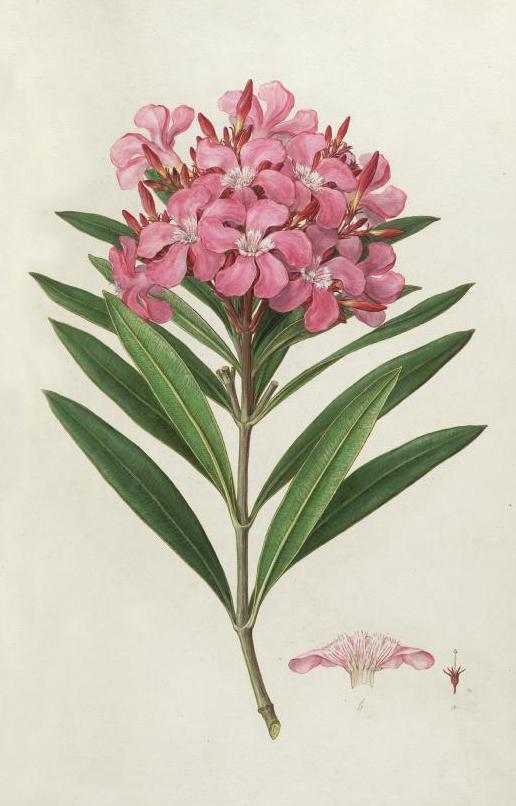Nerium oleander L.
ApocynaceaeEl nombre genérico nerium deriva del griego neros, húmedo, ya que sus raíces llegan con facilidad a las zonas freáticas y sus hojas están adaptadas para resistir la sequía. Es un término que está además relacionado con Nereo, dios marino y padre de las Nereidas, lo que vincula a esta planta con esa divinidad griega de la cuenca mediterránea. Planta muy usada por los árabes en la España medieval, el nombre castellano adelfa deriva en efecto del árabe, al-dafla, que a su vez proviene también del griego, del nombre Daphne. Es una planta muy tóxica, pero también tiene aplicaciones como planta medicinal para tonificar el corazón y como diurético. De todos modos en al-Andalus se la conocía por el sobrenombre de “veneno de los animales”, argumentado que si la planta era ingerida por cualquier criatura, silvestre o doméstica, ésta moriría casi al instante, consideración que se ha mantenido de forma popular en España hasta la actualidad. Fue por ello la adelfa cultivada en los jardines andalusíes como planta ornamental. Así, el almeriense Ibn Luyun, quien estudió en Sevilla en el siglo XIV, la incluye en su Tratado de agricultura entre las plantas que se cultivan para el deleite de la vista y el olfato. En la misma época, por el contrario, Ibn Jaldun, en su al-Muqaddimah, habla de la excesiva atención a la estética frente al sentido práctico en la jardinería andalusí del momento. Así, critica el cultivo de plantas solo por su aspecto ornamental. Un ejemplo con la adelfa: no se planta en los jardines sino a causa de sus bellas flores rojas o blancas, y esta es una práctica introducida por el lujo que, según este historiador, anuncia la decadencia de la civilización.
Procedencia
Europeo/MediterráneoCalendario
Hábitat
Morfología
 Arbusto
Arbusto
 Ovoidal
Ovoidal
 Simple
Simple
 Lanceolada
Lanceolada
 Opuesta
Opuesta
 Entero
Entero
 Cuneada
Cuneada
 Acuminado
Acuminado
 Perenne
Perenne
